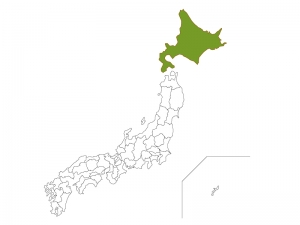#so I figured something highlighting that he's actually a GOOD engineer was warranted
Text
FFXIV Write 2022 Prompt #5 – Cutting Corners
With thanks to @dragons-bones who I first heard the name “Scaevan Systemics” from and only just now realized I had used thinking it was actually from the game.

“Now, really, Aleister, this is no longer a situation I can abide!”
Aleister Franks groaned. Because that entirely too-smooth-to-actually-be-charming voice generally meant trouble for someone. That someone was usually Cid, but all too often he would end up dragged into it. Perks of being a Warrior of Light AND one of the few people not from Garlemald that happened to be an expert at magitek engineering.
Unfortunately, there was no Cid to be found at Rhalgr’s Reach at the moment, and Nero had unfortunately called for him directly.
“Do I even want to know what situation you’re referring to, Nero?”
Nero tol Scaeva, former (allegedy) tribunus of the XIVth Imperial Legion, and Cid nan Garlond’s self-proclaimed eternal rival for the title of “most brilliant magitek engineer on the star”, sauntered up to him, insincere smile on his face, and carrying a decent sized crate by a pair of handles built into the sides. An intricate lock ensured it would remain closed while a built-in keypad served as the mechanism to unlock it.
Nero set his cargo down on the floor. The pair were within the building usually reserved for Ironworks personnel and Rowena’s people, and more than a couple of the latter group were eyeing the pair in amusement. Nero’s antics were entirely too familiar among Rowena’s employees, and far too many had expressed positive opinions of him within Aleister’s earshot.
“The situation, my friend, is that horrible thing you currently have at your hip!”
Aleister cocked an eyebrow and looked down to the left hip Nero had been eyeing. Oh. Of course. Sitting there was his preferred grimoire to use while wielding the art of the Summoner, a magitek tome that Cid had custom built for him. He’d been in the Reach in the first place to deliver some items to M’naago for her little enterprise to raise funds for families of killed Resistance members, and he’d summoned Snowball, his carbuncle, to help with transporting them. Normally the little ball of aetheric sass would have balked at such a menial task, but it was for M’naago, and that meant she was going to get showered with praises and cuddles.
Of course Nero couldn’t tolerate that. Cid had made it, and therefore its very existence was a personal affront to him.
Aleister slowly turned back to glower at Nero.
“Oh come now, my friend, don’t be like that. I will admit, grudgingly, that for a savage heathen from a land full of them, your grasp of the basic principles of engineering is remarkably good! And your willingness to look beyond the….unfortunate association between magitek and my former homeland and continue to wield it makes you perhaps the best ambassador we have in the realm! Emperor knows there’s all too few of that going around, especially with that Ishgardian lunatic having no sense of diplomacy-“
“Nero. If you have a point, get to it already.” Aleister interrupted. “Otherwise, you can walk and talk while I retrieve my wayward carbuncle. You remember Snowball, I trust?” A smirk emerged on his face as Nero shuddered a bit.
“Fine, fine, no need to involve that damnable miniature Eikon. My point is that you really must put aside whatever sentimental attachment you have to that outdated model and upgrade! You’re the Warrior of Light, and frankly, you deserve to wield the newest, and therefore best, that magitek has to offer!”
He reached down and quickly pressed a series of buttons on the keypad of the trunk at his feet. The trunk beeped a confirming sound, then a series of gears whirred to life, retracting a series of bolts out of position, allowing the trunk’s lid to open. With a hiss of depressurized air, it did just that.
Nero reached in and pulled out a rectangul
ar object about a fulm and a half long by half a fulm wide, made of some kind of white colored alloy, trimmed in some kind of silvery metal along one edge, with a diamond pattren criss-crossing to the center. He handed it to Aleister.
“And so, Scaevan Systemics is proud to present. the Scaevan Magitek Grimoire Mark II! My gift to you, my friend!”
Franks looked at it in disbelief. “You made an arcanist’s grimoire”
“That I did, and rather well, if I do say so myself”
“And you’re just….giving it to me?”
“Why not? You’re certainly the most well known wielder of the magick among adventurers and within your guild. I expect many people will ask you where you acquired such a well designed and advanced implement, and I’m hoping you’ll answer truthfully! And if you don’t mind mentioning that I have a complete line of weapons for purchase as well, that would certainly be appreciated.”
Ah. There it was. “So I’m to be your free advertising then.”
Nero looked affronted. “Free? I will have you know I expended no small amount of personal resources creating that for you, not to mention all of the prototypes that came before it! I consider this an investment, my friend, one that I hope you will legitimately enjoy using enough that you don’t mind sending potential customers in my direction.”
Aleister opened the tome. Twelve, was that actual paper within? “Didn’t keep the display, I see?”
Nero sniffed. “Ah yes, that particular bit of overengineering. I will admit, I tried, but power concerns meant I had to remove it in favor of a more….analogue method. Plus, I recall hearing tales of your guild expressing….displeasure over the lack of actual paper and ink in your grimoire, so I concluded that this would serve as a bonus feature of removing that particular annoyance. You needn’t worry, however, there are more than enough advancements within to make up for it. For example, the tome’s contents are fully indexed by the device. Once you complete your aetheric attenuation, merely thinking of a particular array or formula will display the page number it is contained on, allowing you to locate and activate it quickly. It should automatically update for any new additions you make as well, which you will note I left plenty of extra pages for.”
Aleister quickly thumbed through the many pages. “These are….this is everything all right. How did you get access to all of the contents of my grimoire?”
“I hacked into Cid’s device, of course.”
“Nero.“
“Would you rather I left it for you to do? Oh yes, a fine gift that would be, something that requires you to perform a painstaking series of tasks before you can even use it, especially when I have the printing capabilities capable of the necessary precision. Lest you worry, Rowena’s people were more than able to recommend and source the proper inks.”
Aleister sighed. “So what other ‘advancements’ have you made?”
Nero grinned. “Press the button in the back cover’s lower corner.”
Aleister found the small black and pressed it. It glowed bright blue, and a hidden panel slid out of the back cover. The upper half of the panel contained an intricate circular device, which began spinning on a hidden spoke. The lower half contained a number of readouts, which illuminated and began displaying numbers and level gauges.
“An aetheric sensor?”
Nero nodded “Far superior range and precision of measurements to the one in your current implement In addition to measuring the ambient aetheric levels, it will also continuously monitor your carbuncle’s aetheric attunements as you shift through them, keeping you continuously apprised of their current levels. The upper edges of the tome contain a number of holographic projectors which can then illuminate particular arrays when certain conditions are met, all determined by a series of programming conditions into the built-in allagan tomestone there.”
Aleister reviewed everything in turn, then nodded. “I’ll be damned. This is actually very good work, Nero. I’m impressed.”
Nero looked affronted. “Well of COURSE it’s good work. Did you expect cut corners? Slipshod engineering? How dare you, I have no need for that to prove I am better than Cid. My work will speak for itself!”
Aleister laughed, holding up a hand in surrender. “Okay, okay, you’re right. I might have broken more than a fair share of your toys, but they were always well built. I apologize for the implied insult.”
“Apology accepted. And I’m glad you agree, because I have another gift for you. “
“Nero, you don’t have to-” The words died in his throat as Nero had already reached in and pulled another device from the trunk. This one was much smaller, made of some kind of brass colored metal with some sections that appeared to contain blue illumination diodes within.
“Set that grimoire down and let’s have a look at that mad Ishgardian’s device.”
Franks took a second to recall he’d been referring to Stephanivien when he’d spoken of a mad Ishgardian before. Right, guess that means the aetherotransformer. He extended his senses, reaching out into the pocket dimension they call called the armory, and quickly found his machinistry garb. A quick pulse of aether and a brief flashing light illuminated his form. When it faded, his clothes were replaced and his grimoire was gone, replaced by the aetherotransformer device. Stephanivien’s latest firearm creation, the Outsider, was attached to his back.
Nero laughed. “Ah, that must be incredibly convenient. Get those goggles off and press the visor to the left side of your head. It should follow the natural curve well enough. The cross pattern is a display, make sure it covers your left eye.”
Franks took a moment to determine the correct orientation of the….visor, he supposed, and then complied with Nero’s instruction. The device gently but firmly clung to the side of his head, the display illuminating. Everything he saw with his left eye suddenly had a bluish tint to it.
“That’s gonna be a headache inducer for a bit”
Nero waved him off. “Yes yes, you’ll adjust. The important bit is that it attuned to your aether quickly enough and the static adhesion is working. Not uncomfortable I trust? Good. Draw your firearm.”
Trying to brush off his minor annoyance at Nero dismissing his concerns so handily, Aleister removed Outsider from it’s resting place slung to his back. Double checking to ensure the safety was still locked in place and keeping his finger out of the trigger guard, he aimed at a random pillar in the room.
The visor promptly began displaying information, including the range to the current target, wind conditions, and displaying the aetheric heat levels of the transformer.
“Oh, that’s handy!” Aleister exclaimed, lowering the weapon, and noting it now displayed the range to the floor.
Nero chuckled. “I purchased, through an intermediary of course, a couple of the aetherotransformers and created this display visor to augment your Machinists capabilities. The visor will also compensate for low or high light conditions as well. I trust you will find this useful?”
Aleister nodded. “Absolutely. The goggles we used are polarized, but this will be much more effective. Thank you.”
“Thank me by telling all of your machinist friends to come buy one from me. Or better yet, convince your guildmaster to make them standard issue.”
Aleister laughed. “I’ll see what I can do”
#FFXiv Write 2022#Aleister Franks#oldmanfranks#nero tol scaeva#Nero is who immediately came to mind when I saw this#so I figured something highlighting that he's actually a GOOD engineer was warranted#Takes place somewhere in stormblood's patches
7 notes
·
View notes
Text
Moderately Interesting Japanese Ep. 8 Hokkaido Dialect

The typical winter scenery of Hokkaido.
One of my favorite aspects of language learning is studying dialects. I am fascinated by how language branches and adapts to new environments like some form of linguistic natural selection. Japanese is rife with interesting dialects, some of which are so different from the standard that they can sound like a totally different language to the untrained ear. I thought I’d make a series of posts highlighting different dialects in Japanese. Since this sort of post will take a bit more research on my end and I plan to find native speakers of the dialect to confirm with, they won’t be very regular, but I hope that you enjoy them!
What are some of the main Japanese dialects?
Firstly, let me tell you how to say “dialect” in Japanese, because I know I’m gonna use it and I don’t want to cause any confusion.
方言 (hougen)
Dialect
___弁 (__-ben)
__ Dialect, so “Osaka Dialect” is “Osaka-ben.”
I daresay that just about 100% of all Japanese learners are familiar with Tokyo-ben, because it is Standard Japanese. The next most popular dialect is Kansai-ben, which is spoken in the Kansai region (Osaka, Hiroshima, etc.). The Kansai Dialect can be broken down into several smaller, regional dialects. Next would probably be Okinawa-ben.
(Caution! Some people, particularly Okinawans, consider Okinawan Japanese to be a language independent from Japanese, and they can be offended if you refer to it as a dialect. Japan’s official stance is that Okinawan is a dialect, though, so I am calling it a dialect in my posts.)
Now without further ado, let’s actually start learning about one of these dialects!
Hokkaido-ben, namara ii!

Hokkaido is the island in green. It’s the biggest prefecture in Japan by far.
I am a foreigner and Japanese is not my native language, but I have been living on the island of Hokkaido for 5 years now and am very comfortable with the Hokkaido dialect, so I chose to introduce it to you first. Also, it’s not one that gets talked about a lot, so I figured maybe there weren’t many posts about it.
Hokkaido is the northernmost island of Japan, and it wasn’t settled and officially incorporated as part of Japan until the late 1800′s. There is a group of indigenous people here called the Ainu who speak a language completely different from Japanese, but their language has not bled into Hokkaido-ben. (Many place names in Hokkaido are from Ainu, though).
Because Hokkaido was settled so late in history compared to the other islands of Japan, their dialect doesn’t differ drastically from Tokyo-ben. There are some minor intonation differences that, frankly, I don’t feel confident explaining. I have internalized the intonations through exposure, but I’ve never been taught it and don’t really know what is correct. So I’m not going to talk about tonal differences, and instead focus on the different words and a wee bit of grammar.

投げる Nageru
Standard Japanese: 捨てる suteru
English: to dispose of (lit. “to throw/toss”)
To an English speaker, “throw away” feels just as natural as “dispose of.” But to people outside of Hokkaido, it sounds very unusual and the image it conjures is comedic, like someone is hurling trash into the garbage can like it’s the opening pitch at the World Series.
Example: そこの古い新聞を投げていいよ。
Romaji: Soko no furui shinbun wo nagete ii yo.
Standard: そこの古い新聞を捨てていいよ。
Romaji: Soko no furui shinbun wo sutete ii yo.
English: You can throw away those old newspapers there.

おっかない Okkanai
Standard: 危ない abunai
English: dangerous, scary, a “close call”
My hostmom uses this with me, like, all the time. According to her, I’m always doing okkanai things, like walking alone at night or *gasp* going outside with wet hair. I love her so much haha.
Example: うちの子が熊のぬいぐるみだと思って遊んでいたのは本当の子グマだった。おっかなかったわ!
Romaji: Uchi no ko ga kuma no nuigurumi da to omotte asonde ita noha hontou no koguma datta. Okkanakatta wa!
Standard: うちの子が熊のぬいぐるみだと思って遊んでいたのは本当の子グマだった。危なかったわ!
Romaji: Uchi no ko ga kuma no nuigurumi da to omotte asonde ita noha hontou no koguma datta. Abunakatta wa!
English: Our kid thought he was playing with a teddy bear, but it was actually a live bear cub. What a close call!

(手袋を)履く (Tebukuro wo) haku
Standard:(手袋を)はめる (tebukuro wo) hameru
English: to put on (gloves)
Winter in Hokkaido is long and cold. Gloves are one of the most essential articles of clothing here, and I have heard/used “haku” so much that “hameru” sounds incorrect to me. The “haku” sounds funny to other Japanese people because it is used for putting on socks, underwear, and pants, and they will imagine you putting socks or panties on your hands instead of gloves.
Example: 外は寒いから、手袋を履きなさい。
Romaji: Soto ha samui kara, tebukuro wo hakinasai.
Standard: 外は寒いから、手袋をはめなさい。
Romaji: Soto ha samui kara, tebukuro wo hamenasai.
English: It’s cold out, so put on your gloves.

めんこい Menkoi
Standard Japanese: 可愛い kawaii
English: cute
I included this because it’s one of the famous aspects of Hokkaido-ben, but I actually don’t hear it used that much. I tend to see it on souvenir shirts for tourists more than in actual conversations.
Example: この子猫はめっちゃめんこい!
Romaji: Kono koneko ha meccha menkoi!
Standard: この子猫はめっちゃかわいい!
Romaji: Kono koneko ha meccha kawaii!
English: This kitten is super cute!
Note: Even though it is functioning as an adjective and ends with an “i,” it is not an “i” adjective. It is a “na” adjective.

あずましくない Azumashikunai
Standard: 居心地が悪い、嫌 igokochi ga warui, iya
English: uncomfortable (surroundings), unpleasant
This is a word that many Hokkaido people use but struggle to explain. Azumashikunai describes any place that you find unpleasant or uncomfortable, maybe due to it being too crowded, or too empty, or because it’s very cramped, for example.
Example: 日曜日の札幌駅が人混みであずましくない。
Romaji. Nichiyoubi no Sapporo-eki ga hitogomi de azumashikunai.
Standard: 日曜日の札幌駅が人混みで嫌だ。
Romaji: Nichiyoubi no Sapporo-eki ga hitogomi de iya da.
English: Sapporo Station is always crowded on Sundays and I don’t like it.

いずい Izui
Standard: none
English: different (in a bad way), off-kilter, something is “off”
Hokkaido people really struggle to explain izui because Standard Japanese doesn’t have an equivalent for it, but I think it can be likened to “off” in English. You got something in your eye but can’t find it and your eye feels funny? Your eye is izui. You have a hair in your shirt and can’t find it? That feels izui. Sometimes it can be a mysterious ache not painful enough to warrant a visit to the doctor, or sometimes it can just be a sense that something is “off.”
Example: 目にゴミが入って、いずい。
Romaji: Me ni gomi ga haitte, izui.
Standard:目にゴミが入って、痛い。
Romaji: Me ni gomi ga haitte, itai.
English: Something got in my eye and now it feels off.

汽車 Kisha
Standard: 電車 densha
English: (train, lit. “steam engine”)
The first time I came to Japan, I could just barely hold down an everyday conversation in Japanese. My hostparents (hostdad especially) both spoke very strong Hokkaido-ben, and during my first meal with them my hostdad asked if I had traveled from the airport to their city by “steam engine,” and I was just baffled. Wait, did he just say locomotive? What year is it? Are steam engines still a thing in Japan?! Then my kind hostmother explained that he meant regular, modern trains.
Example: すみません、函館ゆきの汽車はいつ出発しますか?
Romaji: Sumimasen, Hakodate-yuki no kisha ha itsu shuppatsu shimasu ka?
Standard: すみません、函館ゆきの電車はいつ出発しますか?
Romaji: Sumimsaen, Hakodate-yuki no densha ha itsu shuppatsu shimasuka?
English: Excuse me, when does the train bound for Hakodate leave the station?

しゃっこい Shakkoi
Standard: 冷たい Tsumetai
English: Cold
Being the northernmost prefecture and next door to Russia, it’s only natural that Hokkaido-ben have its own word for “cold.”
Example: このかき氷ってめっちゃしゃっこい!
Romaji; Kono kakigoori tte meccha shakkoi!
Standard: このかき氷ってめっちゃ冷たい!
Romaji: Kono kakigoori tte meccha tsumetai!
English: This shaved ice is super cold!

とうきび Toukibi
Standard: とうもろこし Toumorokoshi
English: corn
Hokkaido is famous for their sweet corn, and “toukibi” is a word you will hear a lot here as a result. A popular summer snack is corn on the cob with soy sauce and butter, and it’s made just like in the gif above! Japanese people tend to eat it using a toothpick, picking off kernel by kernel. So when I just rocked up, grabbed an ear and started going to town on it, they thought I was a barbarian hahaha.
Example: やっぱり、とうきびに醤油だね!
Romaji: Yappari, toukibi ni shouyu da ne!
Standard: やっぱり、とうもろこしに醤油だね!
Romaji: Yappri, toumorokoshi ni shouyu da ne!
English: Soy sauce really does go good with corn!

なまら Namara
Standard: とても totemo、結構 kekkou
English: very, super, rather
This word is like “menkoi,” in that it is famous throughout Japan for being Hokkaido-ben, but I rarely hear it in actual conversations. I hear people use it when they are surprised by something. “Namara oishii” has a nuance of “It’s (actually) very tasty.”
Example: 曇ってるけど、今日の天気はなまらいい。
Romaji: Kumotteru kedo, kyou no tenki ha namara ii.
Standard: 曇ってるけど、今日の天気はけっこういい。
Romaji: Kumotteru kedo, kyou no tenki ha kekkou ii.
English: It’s cloudy today, but it’s still pretty good weather.

なんぼ? Nanbo?
Standard: いくら? Ikura?
English: How much?
My friend asked me to go get a couple drinks from the convenience store. I came back with a bottle for her and for me and she asked, “Nanbo datta?” I thought that bo was maybe a counter for things, and desperately tried to figure out what we were supposed to be counting. Then she explained that, for whatever reason, “nanbo” means “how much (does something cost)?”
Example: そのお弁当はめっちゃ美味しそう!なんぼだった?
Romaji: Sono obentou ha meccha oishisou! Nanbo datta?
Standard: そのお弁当はめっちゃ美味しそう!いくらだった?
Romaji: Sono obentou ha meccha oishisou! Ikura datta?
English: That bento looks super good! How much was it?

ボケる Bokeru (for produce)
Standard: 腐る kusaru
English: go bad (produce)
In standard Japanese, “bokeru” means “to go senile” or “to develop dementia/Alzheimer's.” While I wouldn’t say it’s a slur bad enough that it would be bleeped out, it certainly isn’t a kind way to refer to aging.
So when my host mom told me, “I would give you some apples, but they’re all senile” I had no clue what she was going on about. But then she showed them to me, and they were all wrinkled like this:

Not exactly the most appetizing, but also not entirely rotten. I’m really not sure why Hokkaido-ben likens produce to senility, but if I had to guess, I’d say it’s because pretty much every single person with Alzheimer’s/dementia is wrinkled.
Example: このリンゴはボケてるから、パイでも作ろうか…
Romaji: Kono ringo ha boketeru kara, pai demo tsukurou ka...
Standard: このリンゴは腐りかけてるから、パイでも作ろうか…
Romaji: Kono ringo ha kusarikaketeru kara, pai demo tsukurou ka...
English: These apples are about to go bad, so I guess I’ll make a pie...

~べ ~be
Standard ~だろう、~でしょう darou, deshou
English: ..., right?
This is probably the most famous aspect of Hokkaido-ben. Japanese people get a real kick out of it when this white girl uses it haha. “~be” is a sentence-ending particle that functions about the same as “darou” or “deshou” in that it:
asserts the speaker’s confidence in the likelihood of something
asks for the listener’s confirmation
This sentence-final particle has its roots in the particle ~べし (~beshi) found in Classical Japanese, which had a similar purpose. Other forms of ~beshi survive in Modern Standard Japanese with the words べき (beki) and すべく (subeku).
Here are two examples, one for each function ~be fulfills.
Example 1: 君の飛行機はあと5分に出発するって?間に合わないべ!
Romaji: Kimi no hikouki ha ato 5 fun ni shuppatsu suru tte? Maniawanai be!
Standard: 君の飛行機はあと5分に出発するって?間に合わないでしょう!
Romaji: Kimi no hikouki ha ato 5 fun ni shuppatsu suru tte? Maniawanai deshou!
English: You said your plane takes off in 5 minutes? There’s no way you’ll make it!
Example 2: このサラダに白菜も入ってたべ?
Romaji: Kono sarada ni hakusai mo haitteta be?
Standard: このサラダに白菜も入ってたでしょう?
Romaji: Kono sarada ni hakusai mo haitteta deshou?
Standard: There was napa cabbage in this salad too, wasn’t there?

~れ ~re
Standard: ~なさい ~nasai
English: imperative command
I really don’t like giving grammar explanations because it’s been a long time since I’ve formally studied Japanese grammar and I’m scared of explaining something poorly or incorrectly. But an upper-elementary level Japanese learner should know that there are many different levels of imperatives in Japanese that vary in politeness. In order of rude to polite, we have:
Imperatives that end in an “e” sound or ろ, as in:
死ね!Shine! Die!
待て!Mate! Wait!
食べろ!Tabero! Eat!
Imperatives that end in tte, te, or de and are not followed by kudasai
死んで Shinde. Die.
待って Matte. Wait.
食べて Tabete. Tabete.
Imperatives that end in nasai. (These are most often used by parents/teachers to their children.)
死になさい Shininasai. Die.
待ちなさい Machinasai. Wait.
食べなさい Tabenasai. Eat.
Imperatives that end in tte, te, or de and have kudasai after them.
And then there’s super formal Japanese, but that’s a whole other kettle of fish.
Anyways. Back to the Hokkaido-ben. I went to a picnic here with a Japanese friend’s family, and her aunt gave me a plate of food and said, “Tabere!” I knew that this had to be an imperative, but I had never studied it before. It felt like it was the same as the rudest imperative, and I spent the whole rest of the picnic wondering what on earth I had done to have her family speak to me like that. Conventionally, they should have been using the -tte form or -nasai form with me.
After the party, I asked her, “Dude, what’s the ~re stuff for? Do they not like me?” I was close to tears I was so hurt and confused.
And that when she laughed and explained that the ~re is a facet of Hokkaido-ben, and it is the same in politeness and nuance as the ~nasai imperative used by parents and teachers to their children.
So I had spent several hours thinking that her family hated me, when really they were treating me like I was their own child!
Example: ちゃんと野菜を食べれ!
Romaji: Chanto yasai wo tabere!
Standard: ちゃんと野菜を食べなさい!
Romaji: Chanto yasai wo tabenasai!
English: Eat all of your vegetables properly.
The End!
This was a monster of a post. There are actually a few more words I wanted to introduce, but I had to cut it off at some point haha. I hope that you enjoyed this segment of Moderately Interesting Japanese. I plan to make more on the other dialects within Japanese, but they will take a considerable amount of time so they won’t be very often.
Thanks for reading!
#japanese language#japanese#japanese dialects#hokkaido#japanese linguistics#study japanese#learn japanese#japanese vocab#japanese vocabulary#nihongo#anime#manga#dragon ball#inuyasha#urusei yatsura#sailor moon#pokemon#pikachu#cowboy bebop#mononoke#moderately interesting Japanese#hokkaido-ben
3K notes
·
View notes